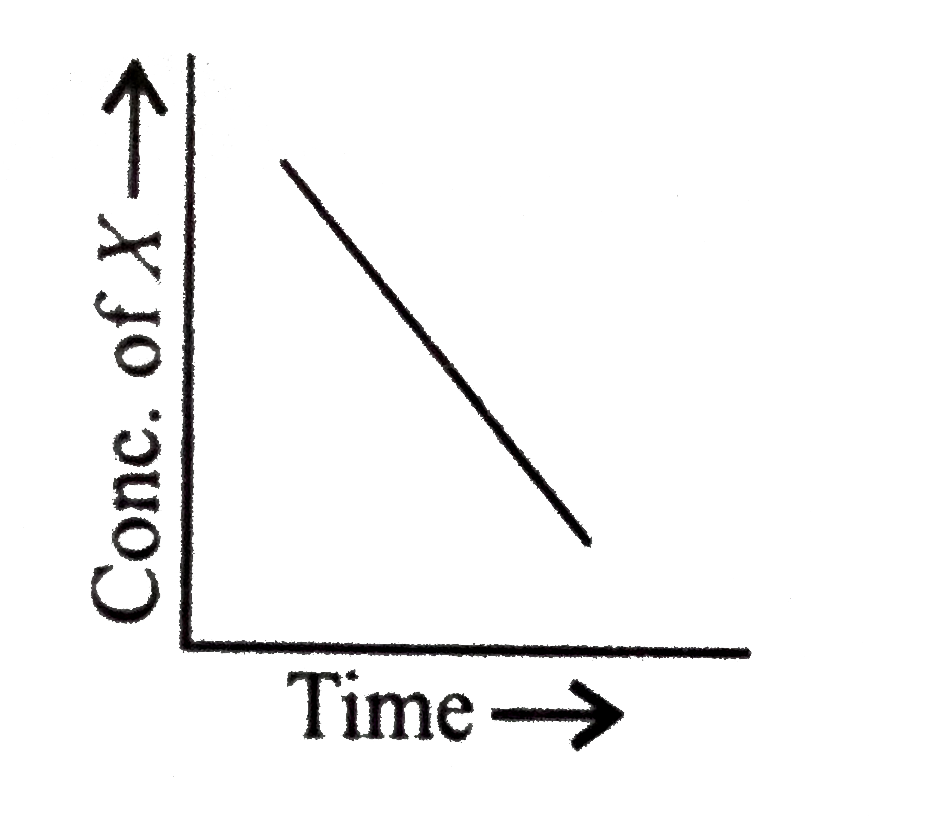Complete Solutions to Factors Influencing Rate Of Reaction of chapter CHEMICAL KINETICS of Class 12 book with complete answers and questions
| Class 12 | CHEMISTRY |
| Chapter | CHEMICAL KINETICS |
| NCERT FINGERTIPS | Factors Influencing Rate Of Reaction |
| Number Of Questions | 30 |
| Academic Year | 2023-24 |
The rate constant of a reaction depends on
02:53View SolutionThe chemical reaction `2O_(3)rarr3O_(2)` proceeds as follows :
`O_(3)rarrO_(2)O" "` (fast)
`O+O_(3)rarr2O_(2)" "` (slow)
The rate law expression should be :02:30View SolutionRate constant in case of first order reaction is
02:45View SolutionThe rate law for a reaction `A + B to C + D` is given by the expression k[A]. The rate of reaction will be
02:39View SolutionA reaction in which reactants (R ) are converted into products (P) follows second order kinetics. If concentration of R is increased by four times, what will be the increase in the rate formation of p?
03:05View SolutionThe rate of a gaseous reaction is given by the expresison `k[A]^(2)[B]^(3)`. The volume of the reaction vessel is suddenly reduced to one-half of the initial volume. The reaction rate relative to the original rate will be
03:13View SolutionThe rate of formation of a dimer in a second order dimerisation reaction is `9.1 xx 10^(-6) mol L^(-1)s^(1)` at 0.01 mol `L^(-1)` monomer concentration. Calculate the rate consant for the reaction.
02:32View SolutionThe rate constant for the reaction, `2N_(2)O_(5) rarr 4NO_(2) + O_(2)` is `3.0 xx 10^(-5) s^(-1)`. If the rate is `2.40 xx 10^(-5) mol L^(-1) s^(-1)`, then the initial concentration of `N_(2)O_(5)` (in `mol L^(-1)`) is
02:28View SolutionThe order of reaction is decided by
03:44View SolutionWhich of the following statements for the order of reaction is not correct ?
03:54View SolutionWhich of the following is an example of a fractional order reaction?
View SolutionWhat will be the rate equation for the reaction `2X + Y to Z`, if the order of the reaction is zero?
01:05View SolutionFor a reaction, `I^(-) + OCl^(-) to IO^(-) + Cl^(-)` in an aqueous medium, the rate of reaction is given by `(d[IO^(-)])/(dt) = k ([I^(-)[OCl^(-)])/([OH^(-)]))`. The overall order of reaction is
01:16View SolutionFor a reaction, `2NO + 2H_(2) to N_(2) + 2H_(2) O`, the possible mechanism is
`NO hArr N_(2)O_(2)`
`N_(2)O_(2) + H_(2) overset("Slow")(to) N_(2)O + H_(2) O`
`N_(2) O + H_(2) O overset("fast")(to) N_(2) + H_(2) O`
What is the rate law and order of the reaction?04:21View SolutionRate constant of two reactions are given below. Identifying their order of reaction
`k = 5.3 xx 10^(-2) L mol^(-1) s^(-1)`
`k = 3.8 xx 10^(-4) s^(-1)`02:26View SolutionFind the values of A,B and C in the following table for the reaction `X + Y to Z`. The reaction is of first order w.r.t X and zero order w.r.t. Y.
`{:("Exp",[X](mol L^(-1)),[Y](mol L^(-1)),"Initial rate (mol L^(-1) s^(-1))),(1,0.1,0.1,2xx10^(-2)),(2,A,0.2,4 xx 10^(-2)),(3,0.4,0.4,B),(4,C,0.2,2 xx 10^(-2)):}`07:05View SolutionFor a chemical reaction `A rarr B`, the rate of reaction increases by a factor of `1.837` when the concentration of `A` is increased by `1.5` time. The order of reaction with respect to `A` is:
02:59View SolutionFor a reaction A`to`B, the rate of reaction becomes twenty seven times when the concentration of A is increased three times. What is the order of the reaction?
02:36View SolutionFor the reaction `A + B to` products, what will be the order of reaction with respect to A and B?
`{:("Exp",[A](mol L^(-1)),[B](mol L^(-1)),"Initial rate (mol L^(-1) s^(-1))),(1,2.5 xx 10^(-4), 3 xx 10^(-5), 5 xx 10^(-4)),(2,5 xx 10^(-4),6 xx 10^(-5), 4 xx 10^(-3)),(3, 1xx 10^(-3), 6 xx 10^(-5), 1.6 xx 10^(-2)):}`08:15View SolutionThe unit of rate constant for the reaction,
`2H_(2) + 2NO to 2H_(2)O + N_(2)`
Which has rate `= k [H_(2))[NO]^(2)`, is02:15View SolutionMatch the rate law given in column I with the dimensions of rate constants given in column II and mark the appropriate choice.
`{:("Column I","Column II"),((A) "Rate" = k[NH_(3)]^(0),(i) mol L^(-1) s^(-1)),((B)"Rate" = k[H_(2)O_(2)][I^(-)],(ii) L mol^(-1) s^(-1)),((C )"Rate" = k[CH_(3)CHO]^(3//2),(iii) S^(-1)),((D) "Rate" = k [C_(5)H_(5)CI],(iv)L^(1//2) mol^(-1//2) s^(-1)):}`05:50View SolutionThe decomposition of dimethyl ether is a fractional order reaction. The rate of reaction is givenby rate `= k (p_(CH_(3)OCH_(3)))^(3//2)`. If the pressure is measured in bar and time in minutes, then what are the units of rate and constant?
02:14View SolutionThe unit of rate of reaction and rate of rate constant are same for a :
01:43View SolutionThe rate of the reaction:
`CH_(3)COOC_(2)H_(5) + NaOH to Ch_(3)COONa + C_(2)H_(5) OH` is given by the equation,
rate `= k [CH_(3) COOC_(2)H_(5)][NaOH]`
If concenration is expressed in mol/L the units of k are01:50View SolutionFor a general reaction `X to Y`, the plot of conc. Of X vx time is given in the figure. What is the order of the reaction and what are the units of rate constant?
 02:09View Solution
02:09View SolutionFill in the blanks by choosing the correct option. Order of the reaction is the `underline(X)` of the powers to which concentration terms are raised in experimentally determined rate equation. The unit of first order rate constant is `underline(Y)`. The unit of first order rate constant when concentration measured in terms of pressure and time in minutes is `underline(Z)`
04:02View SolutionThe number of molecules of the reactants taking part in a single step of the reaction tells about. :
02:01View SolutionIn any unimolecular reaction
03:55View SolutionThe overall rate of a reaction is governed by :
02:55View SolutionFor a reaction `X + Y to Z`, rate `prop [X]`. What is (i) molecularity and (ii) order of reaction ?
01:57View Solution
Factors Influencing Rate Of Reaction questions and complete solutions for chapter CHEMICAL KINETICS of MTG CHEMISTRY (ENGLISH) of Class 12
